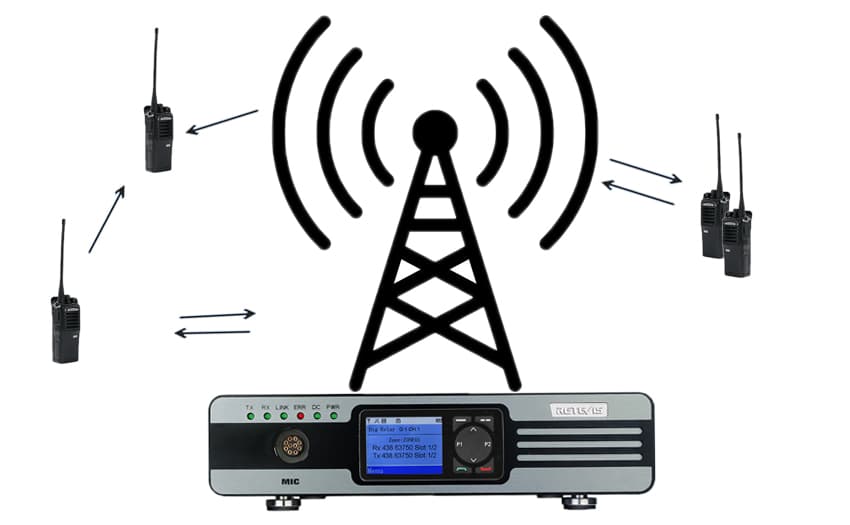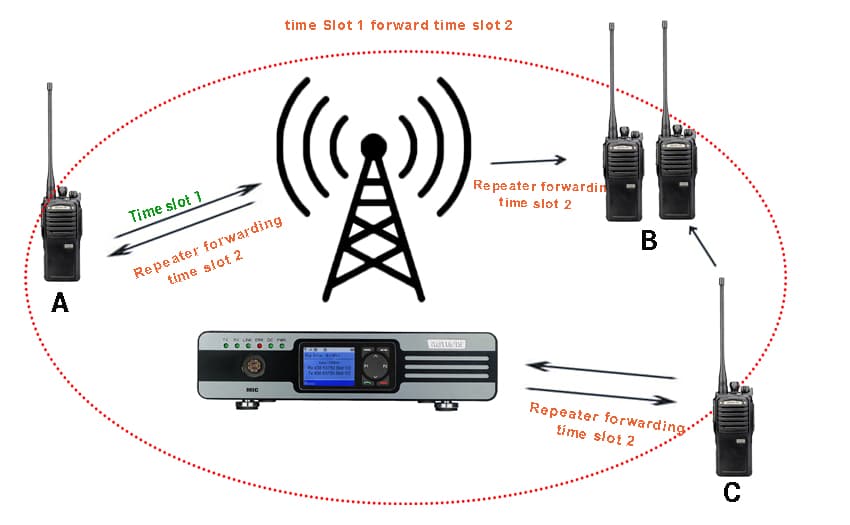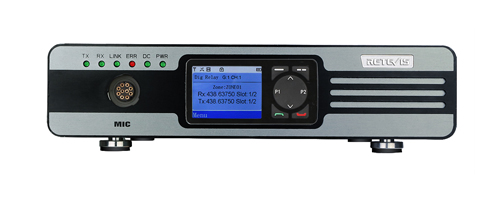Deep understanding of what is single frequency repeater

Single-frequency repeater stations, to put it bluntly, only one frequency point can be used to establish a repeater system, which further improves the saving of frequency resources. Many people in the walkie-talkie industry know that the radio management departments in various places have relatively high requirements for frequency use approval. It is difficult to apply for a relay frequency in many places (1 pair of frequency points are required), and a single frequency point relay only needs to apply for 1 frequency. Just click (the direct frequency frequency applied for at ordinary times) to establish a repeater system to expand the communication range of the walkie-talkie.
Traditional repeater system components require two frequency points, a high frequency point and a low frequency point. The high frequency point is used for transmitting and the low frequency point is used for receiving. Single-frequency relay, like the walkie-talkie pass-through mode, only needs one frequency point to realize the relay function, which saves the frequency resources to the greatest extent and expands the signal coverage in the pass-through mode.
So how does single-frequency relay achieve simultaneous transmission and reception on one frequency point?
To understand this, we must first understand the concept of time slots.
Time slots are generally linked to digital walkie-talkies, and the direct mode dual-time slot communication technology (hereinafter referred to as dual time slots): divide the channel into two alternating time slots, thereby establishing two logical channels in one physical channel. Two sets of walkie-talkies can directly communicate at the same frequency point at the same time, which greatly saves the user's cost and steps for applying for a new frequency point. From a simple understanding, it is equivalent to dividing a frequency resource into two separate parts, these two parts are called two time slots, time slots, when processing signals, they are the same as a single frequency effect.
The direct mode dual-slot communication technology was first applied to handheld walkie-talkies, which can improve the use of frequency resources of walkie-talkies. This is very useful for areas with strict requirements for frequency resource applications in some countries and regions.
In recent years, as people’s requirements for communication distances have increased, the available frequency resources have become more and more limited. We applied this technology to relays, subverting the frequency requirements of traditional relays.
Single-frequency relay uses the concept of dual time slots. Speaking of a frequency point, it is divided into two time slots. We become time slot 1, followed by time slot 2. Among them, it uses time slot 1 for reception and time slot 2 for transmission, thus realizing relay transmission and transmission under different resources. Receive the request.

Take the above diagram as an example. Walkie-talkie A transmits the signal to the relay Retevis RT74 through time slot 1. After RT74 relay receives the signal on time slot 1, it forwards the signal in time slot 2, and walkie-talkie B can receive it. To the signal sent by the relay in slot 2. Walkie-talkie C can also transmit signals to the Retevis RT74 relay in time slot 1. The retevis RT74 relay transmits the signal in time slot 2. When C is transmitting, if walkie-talkie B is closer to C, then walkie-talkie B will first Receive the signal from the C walkie-talkie, but will not receive the signal forwarded by the relay in time slot 2。
This is the easiest way to understand the working principle of single-frequency relay. If you are just interested in our reevis RT74, please click the link below to place an order.
If you have any questions or needs, please contact us:info@retevis.com







